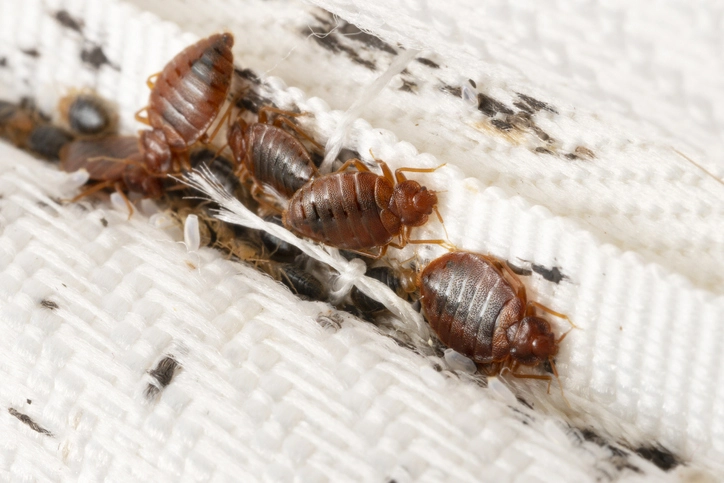Affordable A1 Bed Bug Removal in Houston - Specialist Exterminators
Affordable A1 Bed Bug Removal in Houston - Specialist Exterminators
Blog Article
Recognizing the Lifecycle of Pests for Targeted Control Techniques
Recognizing the lifecycle of insects is a basic aspect of efficient parasite monitoring techniques. By comprehending the different phases of development that parasites undergo, an extra targeted and specific method can be adopted to control their populaces. This expertise not only loses light on the susceptabilities within the bug lifecycle but also leads the method for executing critical steps that can interrupt their development and recreation cycles. With a much deeper understanding of how bugs grow and advance, tailored control techniques can be designed to resolve particular factors in their lifecycle, eventually resulting in even more successful parasite administration results.
Significance of Understanding Parasite Lifecycle
Understanding the lifecycle of bugs is necessary for creating effective and targeted control methods in parasite management. By comprehending the numerous phases a parasite goes through from egg to adult, bug control specialists can recognize vulnerable points in the lifecycle where intervention can be most successful.
Furthermore, acknowledging the certain ecological problems needed for each and every phase of the pest's lifecycle can direct decisions on habitat alteration or exemption methods to reduce and disrupt the lifecycle insect populations. This understanding allows pest management experts to carry out aggressive steps rather than depending exclusively on responsive treatments, bring about more long-term and sustainable pest control services. Ultimately, a complete understanding of parasite lifecycles empowers parasite control professionals to customize their methods successfully, minimizing ecological effects and making the most of control outcomes.
Secret Stages in Insect Development
To efficiently apply targeted control strategies in bug management, a critical element exists in thoroughly recognizing and understanding the crucial phases in parasite development. Bug growth normally consists of numerous essential stages that are important for their lifecycle and management. The initial stage is the egg phase, where pests lay eggs that later hatch out right into larvae. Larvae after that advance right into pupae, a phase where they undergo metamorphosis before emerging as adult insects. Comprehending these phases is essential as it assists in identifying prone factors in the lifecycle where control procedures can be most efficient.

Susceptabilities in Bug Lifecycle
Throughout the different phases of a pest's lifecycle, distinct susceptabilities arise that can be purposefully targeted for reliable control procedures (A1 Bed bug exterminator houston LLC). One crucial vulnerability exists in the egg stage, where insects are usually more susceptible to specific insecticides or biological control representatives due to their soft external covering, making them much easier targets for intervention. Comprehending these susceptabilities in the insect lifecycle is necessary for creating effective and exact control techniques that efficiently manage pest populaces while decreasing ecological influence.
Applying Targeted Control Actions

Carrying out targeted control steps generally entails a multi-faceted method. This may consist of habitat modification to make the atmosphere much less hospitable to insects, such as removing standing water for insect control or securing entrance factors for rats. Furthermore, biological control approaches can be utilized, where natural predators or pathogens are presented to keep bug populaces in check.
Chemical control, such as the cautious application of pesticides, is one more usual approach. However, it is important to make use of these materials deliberately to minimize environmental effect and potential harm to non-target varieties. Integrated Bug Management (IPM) techniques that link integrate numerous control actions in a collaborated and sustainable way are usually the most effective in accomplishing lasting parasite management goals. By carrying out targeted control actions based on a detailed understanding of pest lifecycles, bug populaces can be efficiently regulated while lessening risks to human health and wellness and the atmosphere.
Enhanced Parasite Monitoring Practices

Furthermore, the unification of organic control representatives, such as natural predators or virus of pests, can aid decrease dependence on chemical pesticides and advertise a much more well balanced ecological community. Executing physical obstacles and traps can likewise be component of enhanced insect administration techniques, offering non-toxic and targeted options for pest control. In addition, using pheromones and other semiochemicals can interfere with pest breeding patterns and communication, resulting in minimized parasite populations in time.
Final Thought
Finally, understanding the lifecycle of parasites is important for reliable pest administration methods. By recognizing key stages in parasite development and vulnerabilities in their lifecycle, targeted control steps can be implemented to lessen pest populaces. Enhanced bug monitoring methods can help in reducing the dependence on broad-spectrum pesticides and advertise more ecologically pleasant and sustainable pest control techniques. This understanding plays a vital function in keeping healthy and balanced ecological communities and agricultural efficiency.
Recognizing the lifecycle of bugs is crucial for creating effective and targeted control strategies in pest monitoring. By understanding the various phases a parasite goes with from egg to grownup, pest control experts can determine susceptible points in the lifecycle where treatment can why not look here be most successful. Inevitably, an extensive understanding of parasite lifecycles encourages pest control my explanation practitioners to customize their techniques efficiently, taking full advantage of and lessening environmental impacts control results.
By executing targeted control actions based on a thorough understanding of parasite lifecycles, parasite populaces can be successfully managed while reducing dangers to human wellness and the atmosphere.
By identifying vital phases in insect growth and vulnerabilities in their lifecycle, targeted control steps can be executed to lessen bug populations.
Report this page